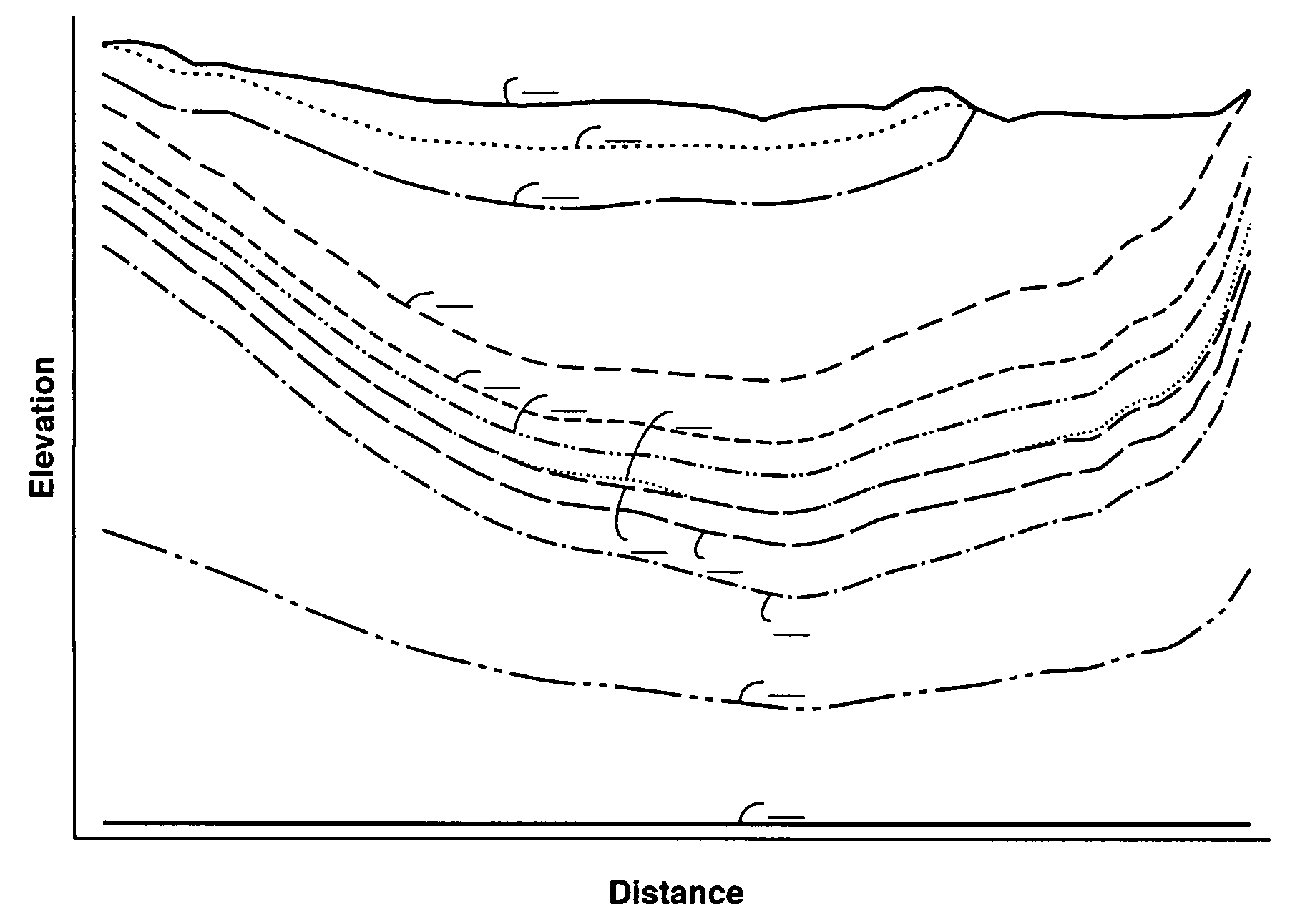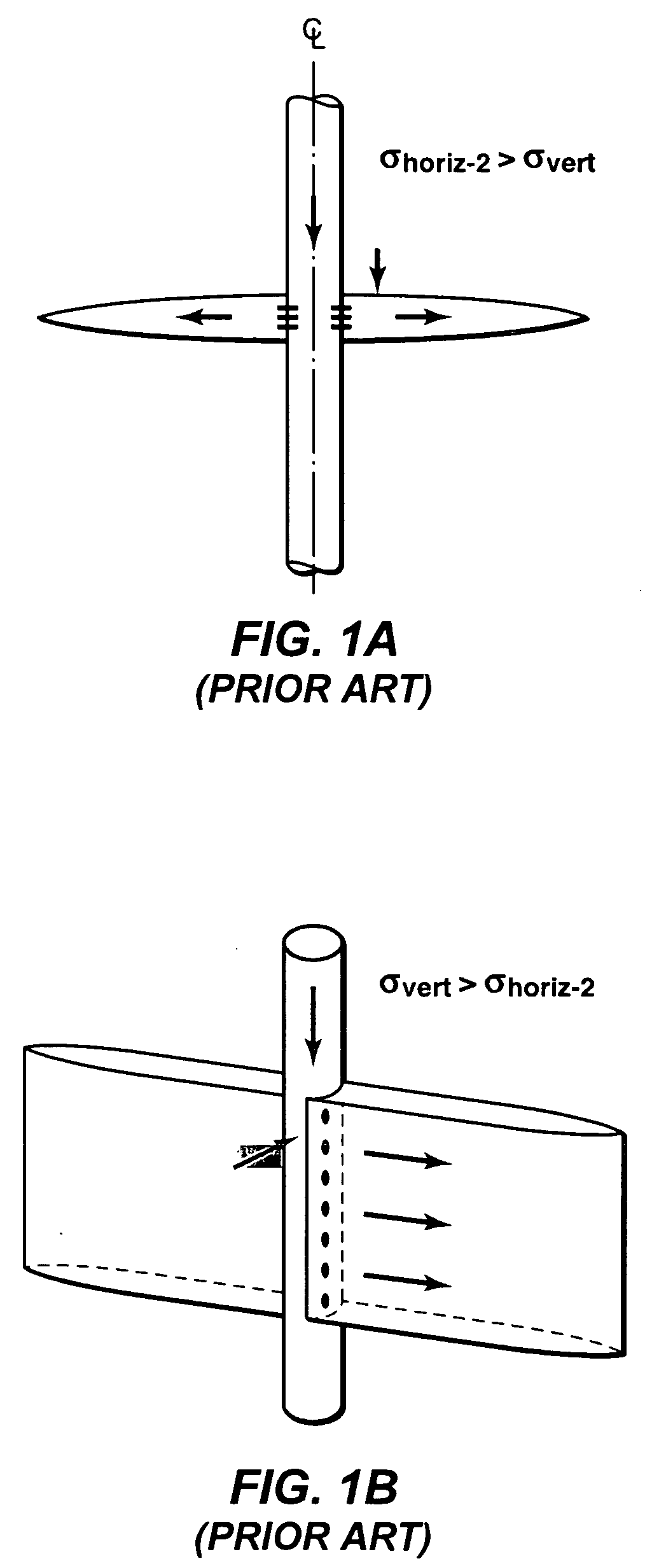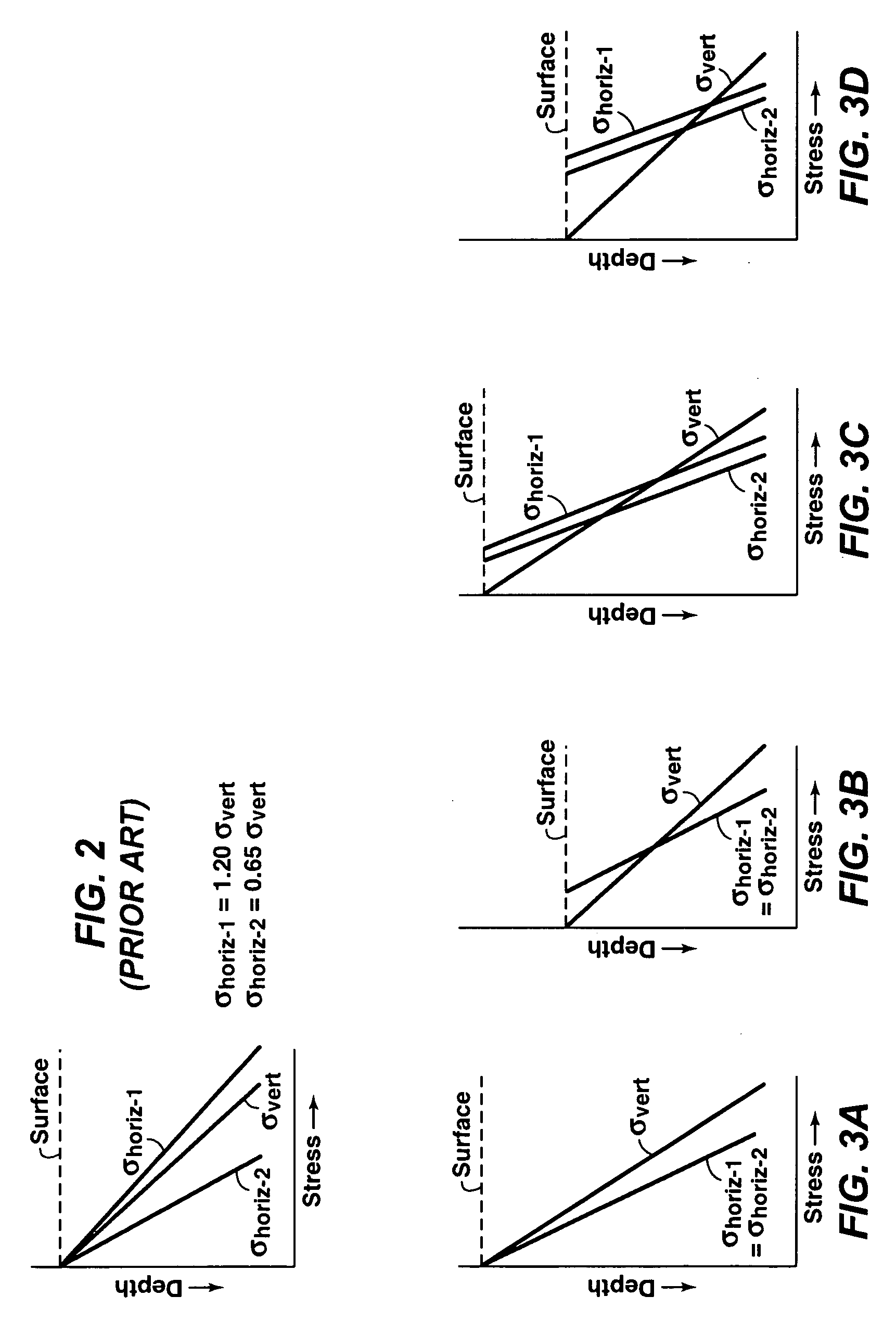Method for calibrating a model of in-situ formation stress distribution
- Summary
- Abstract
- Description
- Claims
- Application Information
AI Technical Summary
Benefits of technology
Problems solved by technology
Method used
Image
Examples
example 1
[0141] The topography and nine subsurface horizons (i.e., the top of each strata) for the formation of interest were obtained from company data and published interpretations of the region from the US Geological Survey. FIG. 4 is a graphical representation of one structural cross-section of the formation. The top line, labeled “Topo,” represents the topography elevation along the cross-section. The nine subsurface horizons for nine strata in the formation are labeled Horizon 2 through Horizon 10.
[0142] To provide a flat bottom surface, on which kinematic constraints could be applied in the numerical modeling, two additional strata were added. The horizon of the near-bottom stratum is labeled Horizon 11, while the flat bottom horizon of the bottom stratum is labeled “Bottom”.
[0143] The gross lithology for each strata was interpreted from well log data and outcrop studies. The interpreted gross lithology for each stratum is described in terms of compositional percentage of end-member...
example 2
[0172] The calibrated model from Example 1 was used to illustrate one example application. In particular, this example was conducted to estimate the fracture orientation transition elevation for the entire formation of interest. Specifically, above the fracture orientation transition elevation, induced fractures will tend to be substantially horizontal in orientation, while below the transition elevation, induced fractures will tend to be oriented substantially vertically. The formation-wide transition elevation estimate includes the effects of topography, tectonics, and recent erosion. The transition elevation estimates are useful for assessing, at any point of interest in the formation, whether the formation's stress state, at that point, is more likely to favor either a substantially horizontal or vertical fracture orientation.
[0173] Stress profiles were extracted from the modeled formation-stress analysis. The elevations where values for σvert and σhoriz-2 were equal were recor...
PUM
 Login to View More
Login to View More Abstract
Description
Claims
Application Information
 Login to View More
Login to View More - R&D
- Intellectual Property
- Life Sciences
- Materials
- Tech Scout
- Unparalleled Data Quality
- Higher Quality Content
- 60% Fewer Hallucinations
Browse by: Latest US Patents, China's latest patents, Technical Efficacy Thesaurus, Application Domain, Technology Topic, Popular Technical Reports.
© 2025 PatSnap. All rights reserved.Legal|Privacy policy|Modern Slavery Act Transparency Statement|Sitemap|About US| Contact US: help@patsnap.com



